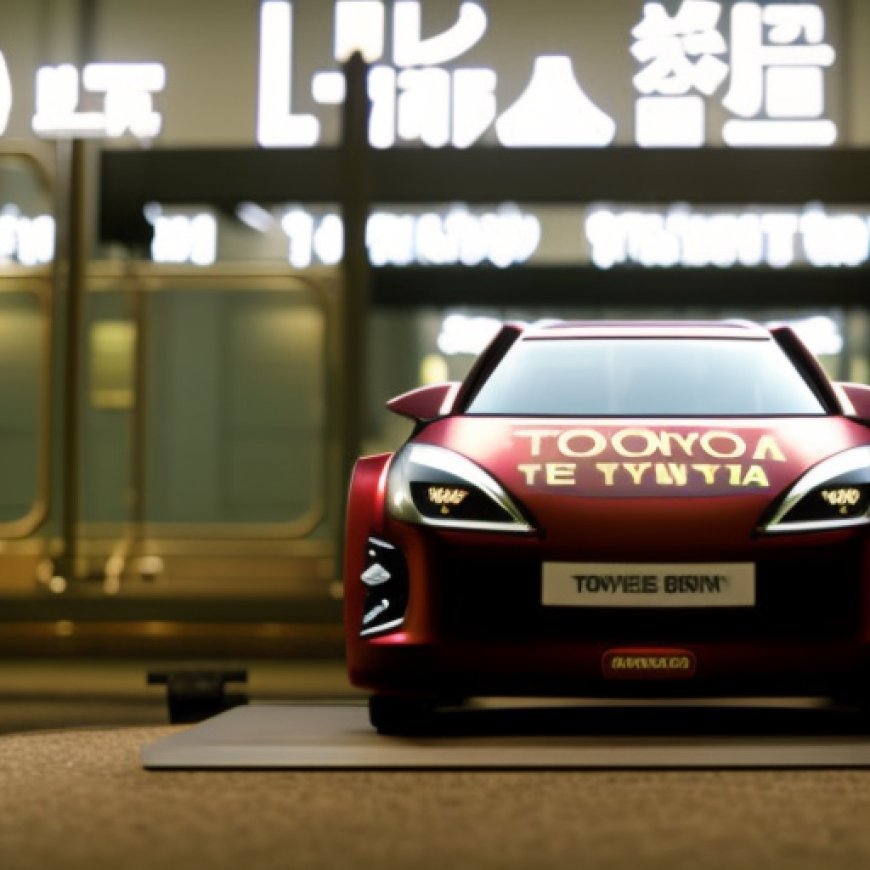Japan’s Toyota announces ‘an engine born’ with biofuel despite global push for battery electric cars
Japan's Toyota announces 'an engine born' with biofuel despite global push for battery electric cars Yahoo! Voices


Toyota Announces Plans for Sustainable Engines
Japanese automaker Toyota has unveiled its plans to revolutionize the traditional internal combustion engine by introducing lean compact engines that run on green fuels such as hydrogen and bioethanol. These engines will also be paired with zero-emissions electric motors in hybrids, aligning with the Sustainable Development Goals (SDGs) of reducing carbon emissions and promoting clean energy.
Competing with Electric Vehicles
While many competitors in the auto industry are focusing on fully electric vehicles, with China leading the push for Battery Electric Vehicles (BEVs), Toyota’s Chief Executive Koji Sato emphasized the importance of optimizing engines for the electrification era to achieve carbon neutrality. Toyota’s well-known hybrid car, the Prius, is an example of their commitment to cleaner driving with its gas engine and electric motor combination.
Collaboration with Domestic Allies
During a “multi-pathway workshop” presentation, Toyota was joined by domestic allies Subaru Corp. and Mazda Motor Corp., both of whom are also preparing ecological engines to meet upcoming stringent emissions standards. Sato highlighted the benefits of collaboration, stating that working together can lead to faster progress.
Future of Car Engines
The legacy of the car engine was a significant topic during the presentation. Mazda announced that its rotary engine, introduced over 50 years ago, is being adapted for electric vehicles. Subaru showcased its smaller horizontally opposed engine and confirmed that it is working on an electric vehicle that maintains the company’s unique characteristics.
Challenges and Uncertainties
Toyota officials acknowledged the challenges of a sudden shift to electric cars, noting the impact on jobs and the supply chain for vehicle production in Japan. They also pointed out that energy supply conditions differ globally, and products must meet various customer needs.
Takahiro Fujimoto, a professor of business at Waseda University, believes that electric vehicles are essential for reducing emissions but also recognizes their weak points, such as emissions produced during the manufacturing of lithium-ion batteries. He suggests that in Japan, where commuters often use trains, public transportation may be a more ecological choice.
Conclusion
The journey towards carbon neutrality is a long marathon race, with uncertainties spanning research and development, social, political, and market conditions. Toyota’s commitment to sustainable engines and collaboration with other automakers is a significant step towards achieving the SDGs and creating a cleaner future for transportation.
- Toyota introduces plans for sustainable engines
- Focus on green fuels and hybrid technology
- Collaboration with Subaru Corp. and Mazda Motor Corp.
- Challenges in transitioning to electric vehicles
- Importance of considering global energy supply conditions
Follow Yuri Kageyama on Twitter: https://twitter.com/yurikageyama
Analysis of the Article
1. Which SDGs are addressed or connected to the issues highlighted in the article?
The article addresses several Sustainable Development Goals (SDGs), particularly:
- SDG 7: Affordable and Clean Energy
- SDG 9: Industry, Innovation, and Infrastructure
- SDG 13: Climate Action
2. What specific targets under those SDGs can be identified based on the article’s content?
Specific targets related to the article’s content include:
- Target 7.2: Increase substantially the share of renewable energy in the global energy mix.
- Target 9.4: Upgrade infrastructure and retrofit industries to make them sustainable, with increased resource-use efficiency and greater adoption of clean and environmentally sound technologies and industrial processes.
- Target 13.2: Integrate climate change measures into national policies, strategies, and planning.
3. Are there any indicators mentioned or implied in the article that can be used to measure progress towards the identified targets?
The article implies several indicators, such as:
- The development and adoption of engines running on green fuels like hydrogen and bioethanol.
- The production of hybrid vehicles with a focus on electric motors as the main driving power.
- The collaboration between companies to innovate and develop ecological engines.
4. Create a table with three columns titled ‘SDGs, Targets and Indicators” to present the findings from analyzing the article.
| SDGs | Targets | Indicators |
|---|---|---|
| SDG 7: Affordable and Clean Energy | Target 7.2: Increase substantially the share of renewable energy in the global energy mix. | Development and adoption of engines running on green fuels like hydrogen and bioethanol. |
| SDG 9: Industry, Innovation, and Infrastructure | Target 9.4: Upgrade infrastructure and retrofit industries to make them sustainable, with increased resource-use efficiency and greater adoption of clean and environmentally sound technologies and industrial processes. | Production of hybrid vehicles with a focus on electric motors as the main driving power. |
| SDG 13: Climate Action | Target 13.2: Integrate climate change measures into national policies, strategies, and planning. | Collaboration between companies to innovate and develop ecological engines. |
Copyright: Dive into this article, curated with care by SDG Investors Inc. Our advanced AI technology searches through vast amounts of data to spotlight how we are all moving forward with the Sustainable Development Goals. While we own the rights to this content, we invite you to share it to help spread knowledge and spark action on the SDGs.
Fuente: yahoo.com

Join us, as fellow seekers of change, on a transformative journey at https://sdgtalks.ai/welcome, where you can become a member and actively contribute to shaping a brighter future.







